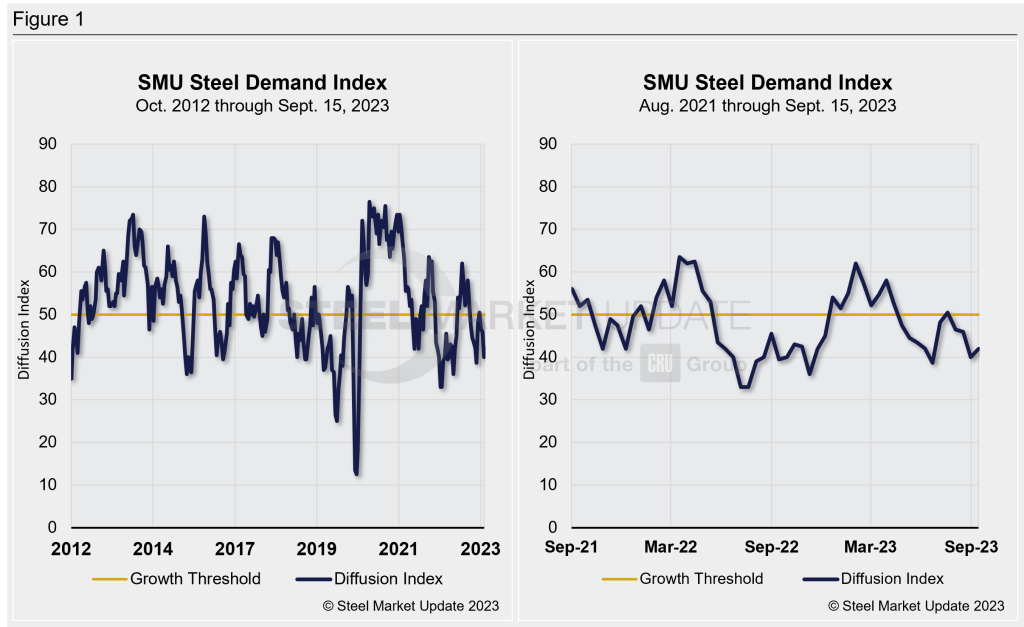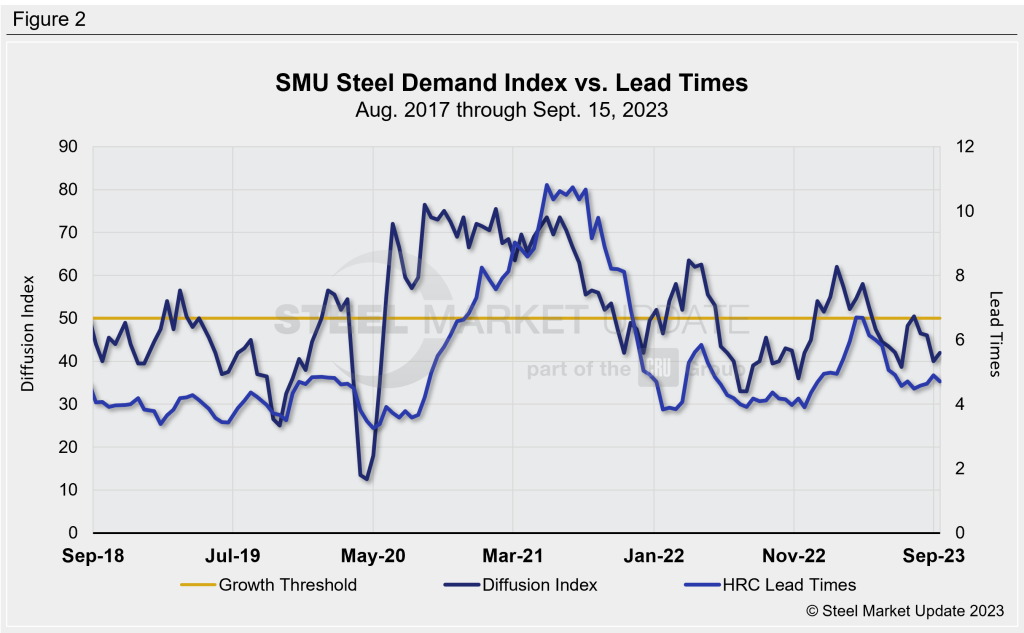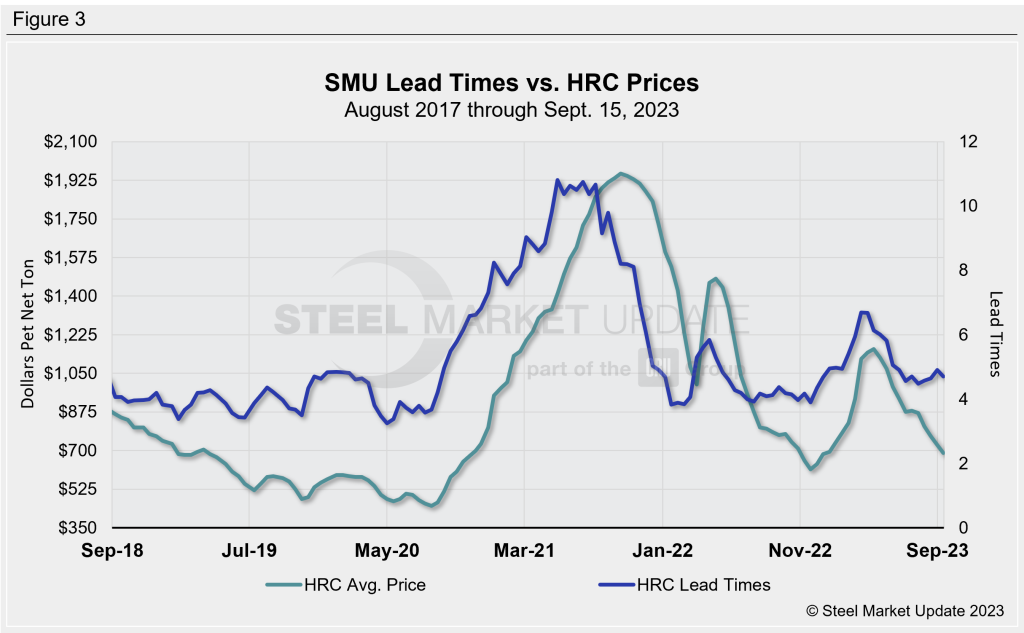Market Data
September 18, 2023
SMU Steel Demand Index Inches Up
Written by David Schollaert
Steel Market Update’s Steel Demand Index remains in contraction territory despite marginal improvement, according to our latest survey data. And while lead times for hot-rolled coil have slipped a touch, they have remained largely stable since mid-June, with demand for flat-rolled steel still trending down.
SMU’s Steel Demand Index now stands at 42, up two points from a reading of 40 at the end of August. The measure has declined by just about 10 points over the past six weeks and is off 20 points from the recent high of 62 reached in February. Except for a short-lived bump when the market responded to mill price hikes mid-June, SMU’s Steel Demand Index has been largely trending downwards since early April.
The index, which compares lead times and demand, is a diffusion index derived from the market surveys we conduct every two weeks. This index has historically preceded lead times, which is notable given that lead times are often seen as a leading indicator of steel price moves.
An index score above 50 indicates rising demand and a score below 50 suggests declining demand. Detailed side by side in Figure 1 are both the historical views and the latest Steel Demand Index.

Overall market sentiment remains mixed but the unprecedented strike at union-represented automakers remains the wildcard, even if it is at best temporary. While most agree that demand is down, especially for HRC, it seems cold-rolled, coated, and plate products have also followed.
SMU’s latest check of the market on Sept. 12 placed HRC at an average of $690 per ton ($34.50 per cwt) FOB mill, east of the Rockies, down $20 per ton vs. the prior week. Hot band is now down $470 per ton since reaching the recent high of $1,160 per ton mid-April.
Ongoing and upcoming mill outages have helped keep lead times at bay, and are likely a reason for the rise of material on order, even as service center inventories saw a boost in July and a slight correction in August.
With lead times currently stretching into Q4, upcoming maintenance outages or production cuts are likely helping prices and lead times from running downhill. With no real boost from the summer slowdown, the final quarter of the year could easily mimic the slowdown seen last year near the end-of-year holidays.
SMU’s demand diffusion index has, for nearly a decade, preceded moves in steel mill lead times. (Figure 2 shows the past five years.) Historically, SMU’s lead times have also been a leading indicator for flat-rolled steel prices, particularly HRC prices. (Figure 3 features the past five years.)


It’s still important to keep a close eye on lead times. While they have been in a holding pattern for the better part of the past four months, they did slip a bit, according to our latest check of the market. With scrap prices down in September and the UAW in an unprecedented strike against Ford, General Motors, and Stellantis, flat rolled prices appear to have little support in the interim.
Our hot rolled lead times averaged approximately 4.71 weeks this week, down marginally from 4.90 weeks in late August. They remain far from a recent high of 6.69 weeks in mid-March. Lead times have been hovering around the 4.5-week mark since roughly mid-June.
Note: Demand, lead times and prices are based on the average data from manufacturers and steel service centers who participate in SMU’s market trends analysis surveys. Our demand and lead times do not predict prices but are leading indicators of overall market dynamics and potential pricing dynamics. Look to your mill rep for actual lead times and prices.







